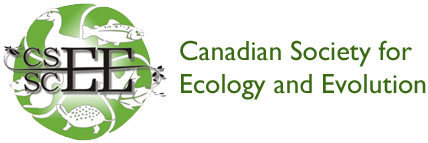PhD position in remote sensing
Université de Sherbrooke – Cégep de Sherbrooke – Université de Moncton
Subarctic peatlands: Carbon sinks in response to permafrost disappearance?
Lacking energy?
Hate mosquitoes?
Like to keep your feet dry and your hands clean?
Good luck with your projects, but you’re probably NOT the right fit for this one:
A PhD scholarship of $ 35,000/year for 3 years (minimum) is available for a motivated student with an interest in northern peatlands, fieldwork, and spatio-temporal analyses, all within an interdisciplinary team. All the details on the next page!
Half terrestrial, half aquatic, peatlands are abundant in Northern Canada, specifically in the lowlands surrounding Hudson Bay (Manitoba, Ontario, Québec). They play a key role in biogeochemical cycles, specifically in the balance between organic matter accumulation and greenhouse gas (GHG) emissions. The presence of permafrost controls organic carbon (OC) dynamics, especially when formerly frozen OC is mineralized upon thaw and released to the atmosphere as GHG (CO2, CH4). However, increasing temperatures across the Arctic appear to result in longer growing season for vegetation (and peat accumulation), a phenomenon referred to as ‘Arctic greening’. New research questions thus emerge: What is the net (annual) OC balance in subarctic peatlands in response to permafrost disappearance? Are they acting as major carbon sources (via GHG emissions), thus amplifying ongoing warming, or as notable carbon sinks (via peat accumulation and vegetation growth), thus counterbalancing the greenhouse effect? Are there substantial seasonal contrasts in gaseous exchanges, especially during the winter – a season for which we have much less data up to now? And finally, can ecosystem dynamics from the past (last centuries to millennia) shed light on our actual understanding of the occurring processes, and help us anticipate what will happen in the future?
Research objectives:
The main objective of this PhD project is to characterize the various stocks and fluxes of organic carbon within a peatland in Nunavik, with a focus on seasonal processes (summer vs. winter), in order to estimate the net balance (sources vs. sinks). More specifically, the project will aim to document:
- accumulation and/or decomposition of biomass in various groups of mosses, grasses, and shrubs typical of northern peatlands;
- concentrations of dissolved and particulate organic matter in ponds and streams at various locations within the peatland;
- accumulation rates of organic matter in the sediments at the bottom of the ponds;
- terrestrial (soil) and aquatic (pond) fluxes of CO₂ and CH₄.
Team and work environment:
The student will conduct his/her thesis under the supervision of a trio of professors from three institutions: Frédéric Bouchard (Université de Sherbrooke), Alex Mavrovic (Cégep de Sherbrooke), and Mélanie Jean (Université de Moncton). The student will join the Centre for Northern Studies (CEN) and the Interuniversity Limnology Research Group (GRIL), two Quebec-based research networks, and will collaborate with a team of researchers from Canada (Bishop’s U., UQAM, UQAR, U. Laval) and France (CNRS, U. Toulouse).
Required training and skills:
- Master’s degree (MSc) in physical geography, Earth sciences, geomatics, biology, ecology, chemistry, or any other related field deemed relevant.
- Experience with GIS, spatial analysis tools, remote sensing, and programming (Python, R, Matlab). Field experience in ecology/geomorphology is an asset.
- Resourcefulness, excellent physical fitness (fieldwork in remote areas).
How to apply:
Please send a cover letter (1 page), a short CV (maximum 2 pages), and 3 references to: Frédéric Bouchard (frederic.bouchard5@usherbrooke.ca).
